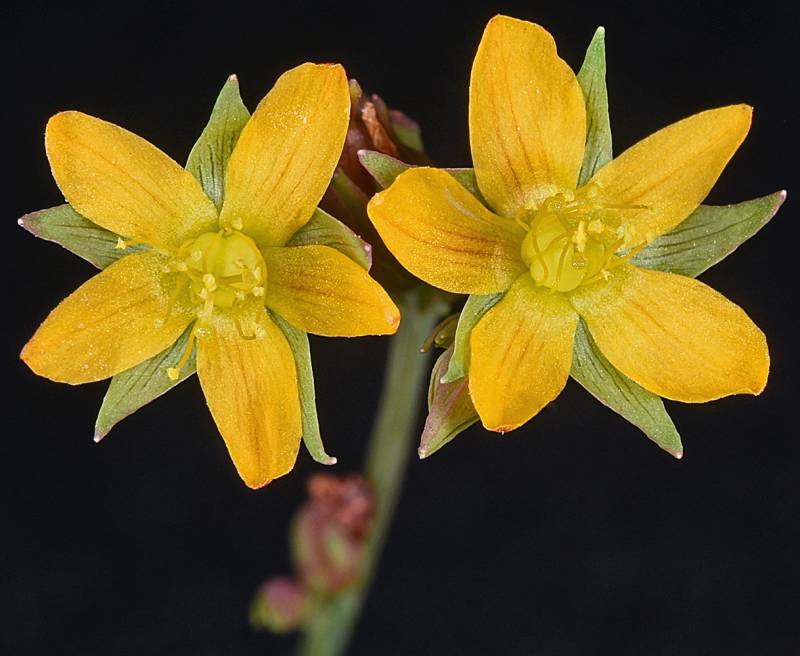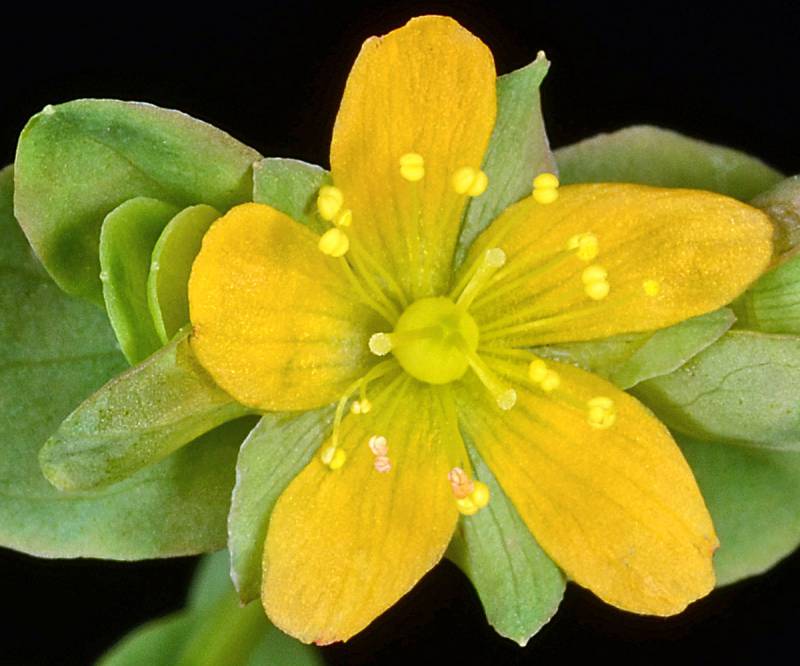Hypericum majus
Hypericum mutilum
greater Canadian St. John's-wort
dwarf St. John's-wort
Leaves opposite, sessile, lanceolate to oblong, rounded, 1-3.5 cm. long, 5- to 7-nerved.
Inflorescence of terminal cymes with small, linear bracts;
sepals 5, lanceolate, 4-7 mm. long;
petals 5, yellow, about equal to the sepals;
stamens 15-35, the filaments almost capillary, distinct;
styles 3, short.
Capsule 3-celled.
Hypericum majus
Hypericum mutilum
Occurring on both sides of the Cascades crest in Washington; British Columbia to Oregon, east to the Atlantic Coast.
Occurring west of the Cascades crest in Washington; southwestern British Columbia to western Washington; also in eastern North America, where native.
- Local floras:
BC,
OR,
WA
- Local Web sites:
Flora NW,
PNW Herbaria
WildflowerSearch
iNaturalist (observations)
USDA Plants Database
- LBJ Wildflower Center
- SEINet
- Plants of the World Online
- Encyclopedia of Life
- Wikipedia
- Google Image Search
- Local floras:
BC,
OR,
WA
- Local Web sites:
Flora NW,
PNW Herbaria
WildflowerSearch
iNaturalist (observations)
USDA Plants Database
- LBJ Wildflower Center
- SEINet
- Plants of the World Online
- Encyclopedia of Life
- Wikipedia
- Google Image Search



